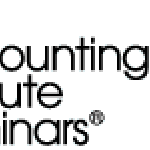- Settore: Accounting
- Number of terms: 7464
- Number of blossaries: 0
- Company Profile:
includes items of continuing accounting significance, such as the analysis of balance sheet accounts and contingencies. Such information from a prior year is used in the current audit and updated each year. Sometimes called the continuing file.
Industry:Accounting
An inventory accounting system updated for each addition to inventory and each issuance from inventory, so the records indicate the exact quantity on hand at any moment. The alternative is a periodic inventory system where actual inventory on hand is determined only once a year.
Industry:Accounting
of individuals present assets and liabilities at estimated current value on an individual's balance sheet (statement of financial condition). A statement of changes in net worth presents major changes in net worth during a period. The accrual basis is used for assets and liabilities, which are presented in order of liquidity and maturity, without classification as to current and noncurrent. The cash value of life insurance less the amount of loans against it is an asset. Deferred income tax on the difference between the income tax basis and estimated current values is presented between liabilities and equity.
Industry:Accounting
The department that maintains records of each individual's employment.
Industry:Accounting
Having the power to influence. Most audit evidence is persuasive, but not conclusive.
Industry:Accounting
Having the ability to permeate. An error is pervasive if it is material to more than one of the primary financial statements.
Industry:Accounting
Expression of an opinion on an item in financial statements is not permitted as part of a disclaimer or adverse opinion on the financial statements as a whole because it would tend to overshadow or contradict a disclaimer of opinion or an adverse opinion.
Industry:Accounting
Audit planning is developing an overall strategy for conduct and scope of the audit. The nature, extent, and timing of planning vary with size and complexity of the entity, experience with the entity, and knowledge of the business. In planning the audit, the auditor considers the entity's business and its industry, its accounting policies and procedures, methods used to process accounting information, the planned assessed level of control risk, and the auditor's preliminary judgment about audit materiality.
Industry:Accounting
